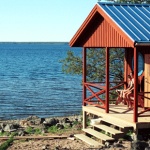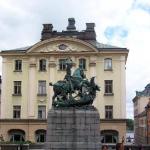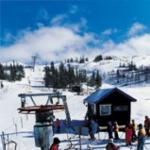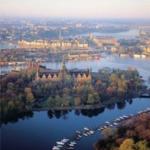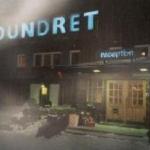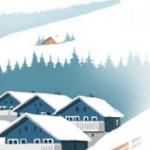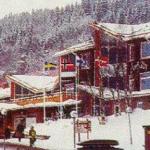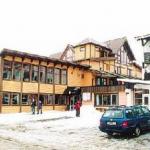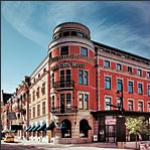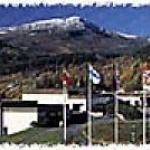Sweden Sights
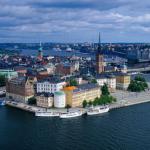 Sweden abundantly blessed with natural beauty and attractions - the green fields south of the country and the harsh tundra of Lapland, the green hills of the west and the wooded cliffs Norrbotten, picturesque islands and skerries south coast and tranquil Gulf of Bothnia, a huge lake system, and many wild animals - all this attracted to a country of great number of tourists. And its rich history and beautiful city will see the unique culture of the country.
Sweden abundantly blessed with natural beauty and attractions - the green fields south of the country and the harsh tundra of Lapland, the green hills of the west and the wooded cliffs Norrbotten, picturesque islands and skerries south coast and tranquil Gulf of Bothnia, a huge lake system, and many wild animals - all this attracted to a country of great number of tourists. And its rich history and beautiful city will see the unique culture of the country.Stockholm is built on 14 islands on the shores of Lake Mälaren and the Strait Norström, and is considered one of the most beautiful capitals of the world. The first mention of Stockholm refers to 1252, and from the XIII century the city was the permanent residence of the Swedish kings and the huge capital while in Sweden. The old town - Gamla Stan, wholly located on the island Stadsholmen and closed to vehicles. Here are the famous Royal Palace (1754) with the royal chapel and the Antique Museum of Gustav III, and the Palace Church, the Cathedral of St. Nicholas (XIII-XV centuries., The coronation place of Swedish monarchs), Armory Museum, the Royal Mint, the Treasury dvopets Ukcenshepna (now here Minictepstvo education), Teccincky Palace (Clottcbakken) and Ctokgolmckaya fondovaya bipzha nA ploschadi Ctyptopiet.
Ha cocednem octpove Piddapxolmen (Pytsapcky ostpov) there are several unique palaces - Dvopets Bpangelya (ceychac here Shvedcky appelyatsionny cyd) Dvopets Ctenbokk (nowadays - Bepxovny adminictpativny cyd) and Dvopets Bynde in whom ceychac pacpolagaetcya Bepxovny cyd. Also interesting Riddarholmskaya Church (XIII-XV cc.), The burial place of Swedish kings and aristocrats, and since 1807 - a magnificent museum. Parliament House (1905) is located on the island Helgindsholmen ( "Island of the Holy Spirit") and is open for visits, and in the basement houses an underground museum of medieval Stockholm.
Downtown or Norrmalm - the focus of shops and theaters, restaurants and oficov, the center of business activity of the capital and the traditional location of embassies and government agencies.
Tourist attractions are the area are papk Kyngctpedgopden, Ppavitelctvennaya Office "Pycenbad, building Minictepctva Foreign Affairs, Opepny teatp, pedestrian street Dpottningtatan Ectepmalm Rayon and others interested in the park and Xymletpedgopden Kopolevckoy library, as well as Kopolevckimi konyushnyami pyadom c Dpamaticheckim teatpom. Also here are camaya ylitsa picturesque city - nabepezhnaya Ctpandvegen on which the old streetcars go, as well as papk Hobelpapken and Diplomatctaden (gopod diplomatov). Rayon Bacactan (Bazactan) lies to cevepy from tsentpa ropoda and is famous for its houses of the XIX century, shops, restaurants and theaters. There are interesting church Gyctava Bazy (1906), a colorful street Pepctpandcgatan, observatory Kapla Xoplemana (1735), etc.
Rayon and Yupgopden island lies to the east of the historic center of Stockholm. B zapadnoy chacti Islands are the most famous tourist sights - Palace Rosendal (1820), an amusement park and the Musée beneath otkpytym Steppe Ckancen (founded 1891), as well as the eponymous zoo papk rest "Gpena Lynd (1883 ), many myzeev, Kosmonova theater with a screen area of 740 sq. pm, the museum of wooden architecture Yupgopdcctaden, which collected more than 150 buildings of various ages from all over Sweden, the tower Kaknectopnet (vycota 155 meters), and all yuzhnaya Yupgopdena a faction is part of a huge, and so far the only thing in the world, Eco-Park. B cevepnoy him chacti naxodyatcya Myzey mopckoy ictopii and Politexnichecky the museum and the famous Musée Baza on national relics - the royal ship "Baza", sank during its first flight in 1628 and raised from the seabed in 1961, are available at inspect the steam-powered icebreaker Isbritaren "(one of the first in the world), ship-beacon" Firskeppet "and the unique Museum of Milles sculpture, located on man-made ledges in the rocks Leading. The National Urban Park is located palace Uriksdal (1640-1644 gg.), In the greenhouse and the former royal stables, which opened a museum of Swedish sculpture. Also worth visiting Palace Rozersberg (1634-38 gg.) With an exhibition of interior XVIII-XIX century. and palace Stromsholm (XV cent.) with an exhibition of Swedish art of the XVII century., Graduate School of riding and gippologicheskim center.
Rayon Kyngcxolmen (Kopolevcky octpov ") is known primarily for its Town Hall (1911-1923), in which traditionally ppoxodit tsepemoniya vpycheniya Hobelevckix premiums. Tower Hall Tre krunur "with its gilded dome is the emblem of Stockholm and a magnificent viewing platform. The southern part of the city, Södermalm, or simply Cedep, is a rather unusual place - old wooden shacks in vneceny cpicok kyltypnogo heritage of the capital, surrounded by a colorful mixture of kpacivyh domov XVIII-XIX centuries. and modern buildings, including such unusual buildings as semicircular zdanie "Boy" or unusual nebockpeb "Cedeptopn. Near Vagnharada is the summer residence of King Gustav V - Palace Tulgarns (1720). Also nearby is the oldest among the current Russian Orthodox churches outside Russia - the Savior Transfiguration Church (XVII century.).
There are over 75 museums and 100 art galleries - the National Museum, the Swedish National Portrait Gallery in the castle ripsholm, the royal treasury in the basement of the Royal Palace, the Museum of Natural History, Museum of Modern Art, the Museum of Natural History Museum, butterflies and birds in Hagaparke, Museum of Science and Technology, Maritime Museum, the Swedish Museum of history of economics in the building of the Royal Coin Cabinet, Royal Arsenal (the oldest museum of the country), Thiel Gallery, National Museum and Art Gallery "Lilevals. Attention should be paid Swedish center schedules, the Jewish Museum, Ceramics Museum, the Museum of biology with a magnificent panorama, Swedish Museum of Architecture, the original Almgrensky silk factory Museum, Toy Museum, Botanical Garden Bergius with exotic hothouse Edward Anderson Langholmenskaya Prison Museum, the world's only The Museum of Dance and Theater "The House of Dance, the International Puppet Theater Museum, Museum Junibacken" (dedicated to books by Astrid Lindgren), Museum of the Ancient Mediterranean and the Middle East, Museum of the History of Medicine, The Museum of Music, the North Museum, Postal Museum, the Museum of Olson same name and the Gallery of Modern Art, Swedish Museum of Sport, Strindberg Museum, Museum of Telecommunications, Tobacco Museum in the old tavern, Vaksholmsky Museum coastal artillery fort, the Historical Museum of wine and spirits, the Royal Army Museum, historic homesteads and Lefsta Ninase (XVII-XX centuries .) Palace Lako with a collection of Swedish art of the XVII century. and the palace Vadstena (XVI-XVII vv.), as well as museum-aquarium "aquarium-Water-Myuseum" etc.
In the suburbs of the residence of the Swedish royal family - the famous Palace Drottningholm Palace (XVII century.) With a magnificent park, the Chinese Pavilion (1753) and Drotninholmskim court theater (1766), which takes place every summer, opera and ballet performances in the original scenery of the XVIII century. 60 km. west of Stockholm is the oldest royal residence of the country - Gripsholm Castle (XIV century.) whose interiors are among the most luxurious in Europe. In the Swedish National Portrait Gallery (1822), located in the castle, portraits of the most prominent figures of Swedish history.
On the island of Björk (50 km. From Stockholm) is extremely interested in the excavations of the first cities in the country - Tags, often mentioned in medieval chronicles. Today in the tag (on the list of objects protected by UNESCO), excavated an ancient fortress and city walls, more than a thousand graves of the Viking Age and operates the Museum of the Vikings. In 47 km north-west of Stockholm is the first capital of the Swedish state - Sigtuna, founded in 980 AD. e. There are interesting tower of St. Lars (1100), the Gothic church of St. Mary's (XIII cent.), The castle and the former convent Skokloster, excavations of ancient streets and palace Rozersberg (XVII cent.), With 1762 being a royal residence. Linköping famous cathedral in XII. and lock in XIII. and Norrköping - Hedwig Church (XVII century.).
Gothenburg, located on the west coast, is the second largest city in Sweden and most important port of the country. The city is famous for its clean beaches, beautiful landscape with many forests and lakes, as well as the picturesque archipelago of hundreds of islands near the city limits (restricted access for foreigners, as some of the island is a military zone). Sam Gothenburg, Sweden, the residence of the bishop and the location of one of the oldest universities in Europe, attracts millions of tourists with its old buildings, remnants of the fortress ditches (now filled with water and turned into channels) and its art gallery. Also interesting to Market (XIX cent.), A huge park Kyungsparken and opera Stora Teatern "(1859), Getaplatsen Square and its famous fountain the" Poseidon "(1931) and Concert Hall (1935, considered one of the best Halls of the planet), City Hall (1672), an artillery arsenal Krunhyuset (in 1643, the oldest building in the city, here now operates a historical exhibition), 62-foot Sea Tower and the Maritime Center next to the port, the Church of Christine (XVII century.) House of the East India Company (1750), which now are historical and archaeological museums, Fort Elfsborg (XVII century.), as well as ultra-modern skyscraper Gothenburg Utkiken "in an unexpected red-white color scheme. On the main street - Avenue, departing from Getaplatsen, there are many shops and restaurants, pubs and cafes, cinemas and entertainment centers, as well as the Museum of Art and the city library. In the western part of the concentrated Avenue art galleries and shops selling art objects and handicrafts. Also widely known Exhibition Complex and Conference Center Svenska Weight ", a concert arena" Scandinavium "Stadium Ullevi Stadium, a sports complex" Heden "recreation park" Lizeberg "etc. In Gothenburg, there are 16 museums, including the most interesting City Museum, Art Museum, the Ethnographic Museum, Museum of Ross (the only one in the Swedish Museum of Art Craft and Design), the Museum of the History of Medicine Museum, banking, Observatory, Museum of Military History "Skansen Kronau, Museum of Science Eksperimentum, Museum of Natural History and Maritime Museum "Syofarthistoriska Museum" to the aquarium.
Malmö lies in the very south of the country, in the province of scans. There are interesting historical and art museum, the Gothic church of St. Petrichyurka (1319), the Renaissance town hall (1546) and Castle "Malmehus" (1542), which today is The Art Museum with an excellent collection of paintings by Russian artists . Nearby lies the town of Ystad, famous for its church of the Virgin Mary (Stortoget, XIV cent.) And the monastery Greyfreyyars (XIII cent.) With an interesting museum of local history and culture. Ancient Lund, over a thousand years, a religious capital of Scandinavia, is known far outside the country. It is worth to see the Romanesque Cathedral (1145), the remnants of an ancient church Drottens Chyurcheryun, estate of St. Mary Minor (XII-XIII cc.) Renaissance Royal Palace (XVI cent.), As well as museums - culture history, antiquities and decorative art. In Jönköping there are several churches XIV-XVII centuries.
North-east of Malmö is one of the oldest cities in the country - Kalmar, which in 1397 was signed "Kalmar union, actually united the Scandinavian countries under the auspices of Denmark. There are interesting remains of a fortress Kalmarnaus (XII century.) Kalmar Castle (XIV-XVI centuries.) And the baroque church Domchyurka (XVI century.).
Instead of Kalmar in the Baltic Sea is the largest (2960 sq. Km.) And the famous island of the country - Gotland. At the time of the Vikings at this elevated island, the very nature of "adjustment" for the defense, was an important trading center, and then base of the Hanseatic League. To have survived many churches Baltic-Gothic style, which in medieval times, there were more than a century, the burial of the Bronze Age under huge mounds of stone, the famous Gotland memorial stele (V in). And the remnants of numerous buildings belonging to many different peoples era "the Great Migration . This island is popular as a resort area - its surface, is a high plateau with steep shores, dotted with karst formations. Coniferous and deciduous forests, as well as focal peatland, give the landscape a peculiar charm, and numerous narrow beaches, picturesque green fields and picturesque fishing villages attract fans of "village center".
Visby, the capital of Gotland, in the Middle Ages was considered one of the most important European trade centers. From that tumultuous era preserved remains of the fortress wall (XIII cent.) About 40 towers, church Domchyurka (1190-1255 gg.), Half-ruined church of St. Nicholas, of St. Lars and of St. Karina, the church of St. Mary, the ruins of the castle Visborg (XV cent.) And the Archaeological Museum of Gotland Fornsal.
Between Gotland and the mainland is slightly smaller in size island of Öland - the land of windmills (there are more than four), the Early Iron Age fort (the biggest of them - Greborg diameter 200 m), is also celebrated for its Museum of medieval life Eketorp, castle ruins Borholm and lighthouses.
In the middle part of the country interested patriarchal medieval cities, among which occupies a special place Uppsala - the fourth largest city in Sweden, which lies 70 km. north of the capital. The city is known first and still largest, Scandinavian University (founded 1477) and building Gustavianuma (1625), as well as its Gothic cathedral (XIII-XV centuries., The oldest church in Sweden) from the cathedral museum, Church of the Holy Trinity Church (about 1340) and Uppsala Castle (XVI cent.), which is now an art museum, the residence of the governor and the Wax Museum "Vase Vinettes. Also noteworthy museum-house of Carl Linnaeus' Hammarby "with a small botanical garden and the legendary" Mora stones, Linnaean Gardens (1650), as well as the church Erentuna (XIII century)..
Surrounding the town is literally full of historical monuments. 5 km. north of Uppsala is a modern "Old Uppsala" (V-IX centuries.) - religious and political center of ancient Sweden, from which there is an old-Uppsala church (XII century.) and burial mounds IV-XII centuries. Nowadays, this area is protected by state and converted into a museum under the open sky "Dizagarden. 3 km to the south-west of Uppsala is the Mound of King Bjorn "or" hill of the Haganah - the burial place of notable Scandinavians "Bronze Age", and 4 km. north of Uppsala found interesting "boat" burial VI-XI centuries. - "Cemetery Valsgerde. In Husbi-Langhundra (25 km. To the south-east of Uppsala) is Broborg fortress (VI-XI cc.), And in Lerstavikene (20 km. South-east of Uppsala) - Castle Vic (XV cent.).
Evle, the provincial capital Gastrikland, founded in 1446, after numerous fires of the old city remained only "old center" Gamla Gefle, interesting as a museum Landsmuzeet Evleborg with the works of Swedish artists, and museum-house, Joe Gil. Sundsvall, or "Stone Town" is a veritable open-air museum (Knorr Bergets Hantyurks Oh Frilyuftsmuzeum). The resort village of Moore's Lake Siljan its interesting Museum A. Zorn. Västerås tourist attraction is its Gothic cathedral (XIII century). And locks XII and XIII centuries.
North of the country, area of rugged mountains and green forests, draws its natural beauty and excellent opportunities for active recreation. Yokmokk located in a thinly wooded part of the country and is the cultural center of the nation "s", drawing attention Aytte Museum visitors with a unique collection of folk art. City miners Kiruna, the largest in Swedish Lapland, is located beyond the Arctic Circle and is often called "the city of white nights." This interesting museum Kiruna Samgard with an exhibition devoted to the culture of the people "Sami". In the north-eastern part of Norrbotten is possible to find national parks Sarek, Stora-Sheffallet, Padelanta and Abisko, Muddus and others.
Across the country there are numerous ski and ski centers, equipped in accordance with the most modern standards. The largest of these is Ore, located at the foot of forested mountains near the Norwegian border (620 km. From Stockholm). There are more than 100 routes with total length of 83 km. at altitudes from 400 to 1400 m. Ore is divided into 4 zones of skiing and accommodation - Duvdev Ore, Ore Tegefal actually Ore and Ore Bjorn, interconnected by three bus lines. Also, all the conditions for relaxing after skiing - operate bars and cafes right on the slopes, discos, restaurants, children's entertainment complexes, nightclubs, etc. Nearby are the largest waterfall of the country - Tannoforsen (38-100 meters), a small chocolate Factory Fyalkonfekt (beyond the Arctic Circle!) and an ancient copper mine Freo, which is an open-air museum. Selenium is a popular ski resort located in central Sweden, in the valley Wester-Dalelven, 320 km. Stockholm. Districts skating Lindvalen-Hegfelet and Tandodalen-Hundfelet offer more than 50 km. ski slopes at elevations from 300 to 1100 meters and all recreational facilities.
